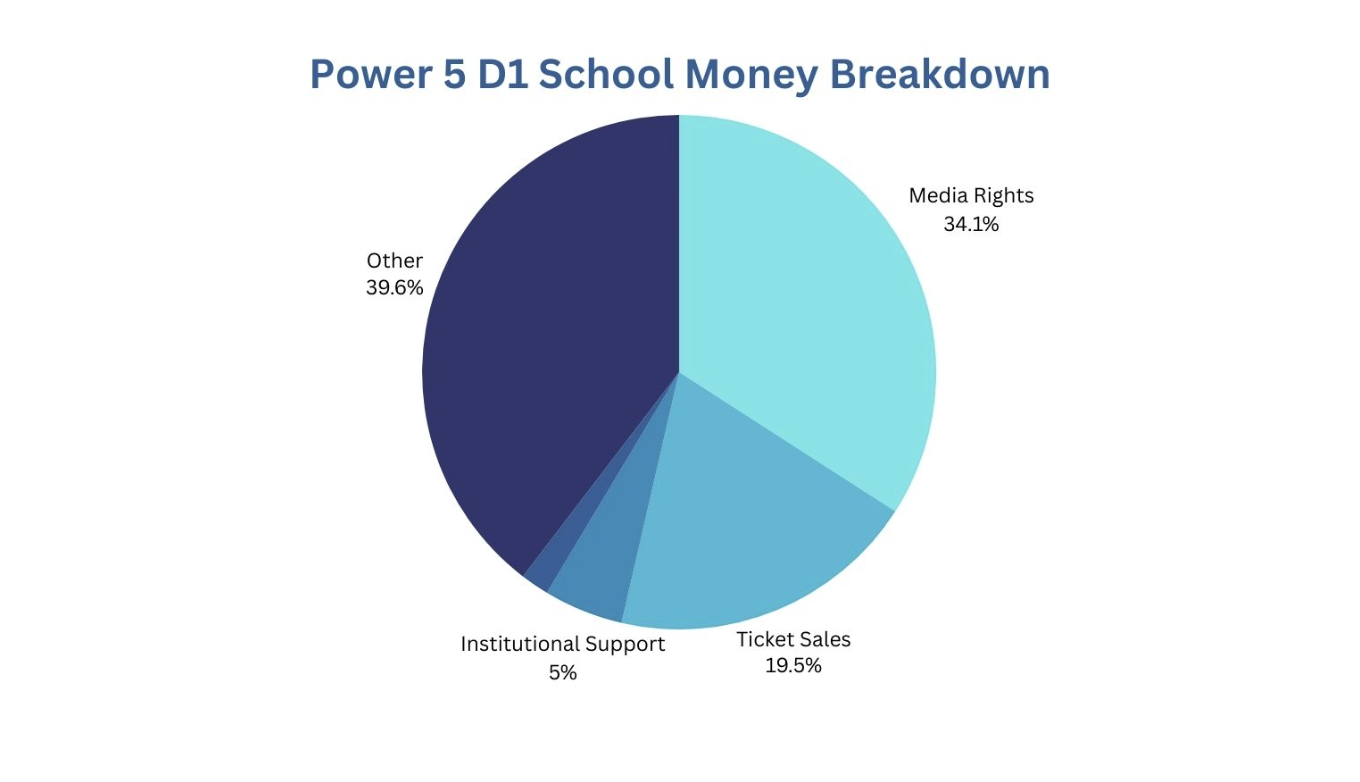How Big Time Colleges are Missing Out on a Key Revenue Source
Written By: Tex Green
It’s no secret that colleges and their athletic programs make a crap-ton of money. It’s why their teams can be so successful, their facilities state of the art, and have all the other benefits they do. But, where does that money come from? Some of it comes from where you might imagine, but other places may come as more of a surprise. However, after learning more about this subject, what really surprises me is where the money isn’t coming from. Let me explain:
Let’s start by looking at the schools with the most exposure and the largest amount of money: Division One Power 5 Schools. Power 5 means the five largest conferences in college sports, those being the ACC, Big Ten, SEC, Pac-12, and Big-12. These schools generate the majority of their money from media rights (TV deals). Their next biggest source of revenue is donor contributions, followed by ticket sales, and then other small amounts from institutional support and student fees. Here’s a pie chart depicting this:
That other section of the pie chart encompasses donor contributions and university endowment. I’d like to credit Dominyck Bullard and his newsletter, “Power Play” for digging up these stats through Axios.
These colleges are bringing in billions of dollars to their programs every year, and they’re doing perfectly fine. Yet, they’re still neglecting one of their biggest opportunities to make even more money…and that opportunity is social media.
Let’s take SEC football for example. Alabama football’s Instagram has 1.3 million followers, Auburn has 343,000, LSU has over 1 million followers, Georgia has over 1 million followers, Tennessee has 605,000 followers; you get the picture. Yet, they aren’t taking advantage of monetizing these accounts.
There are so many ways that these teams could monetize their fans online. They could create premium content online only available to fans who pay, for example. They could collaborate with brands to do sponsored posts, for which they would be paid a pretty penny given their follower base. They could also create online campaigns using features like auto-DMs to reach out to their fans in order to get them to buy tickets, merchandise, or anything else affiliated with the program that they’re selling. They could even sell those various products and merchandise on Instagram, making sure their full fanbase is engaged. Either way, the returns from social media advertising and marketing could create a new share of that pie chart much larger than anything envisioned before. Yet, teams still aren’t doing it. Either there’s a rule prohibiting them from doing so, or they just haven’t figured it out yet. Whatever the case, it’ll likely change soon.
Teams may not be marketing on social media and doing sponsorships, but college athletes most definitely are! NIL has totally opened up that door, and we here at MK Hustle are making sure our college clients are maximizing their earnings. If you want to learn how you can maximize your brand with us, don’t hesitate to reach out.
